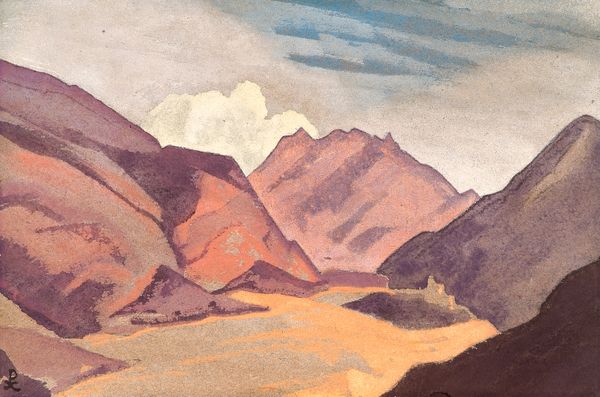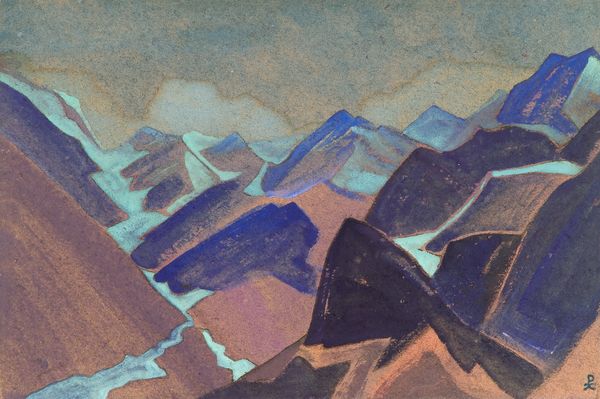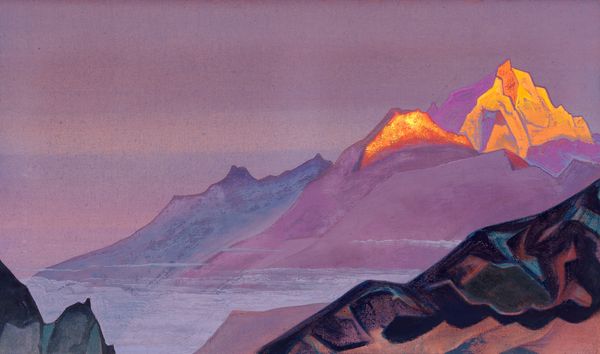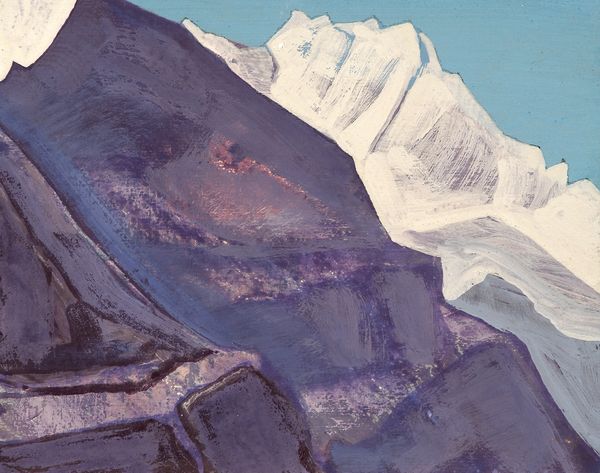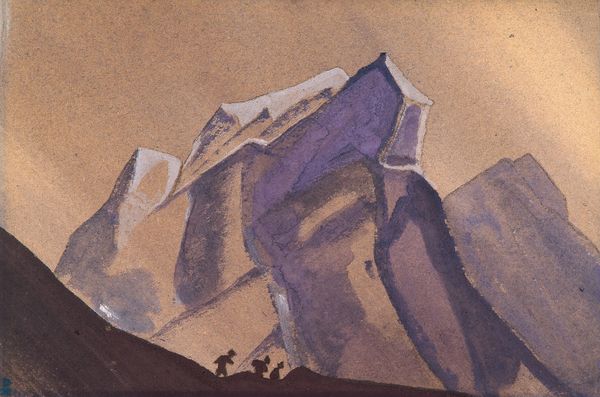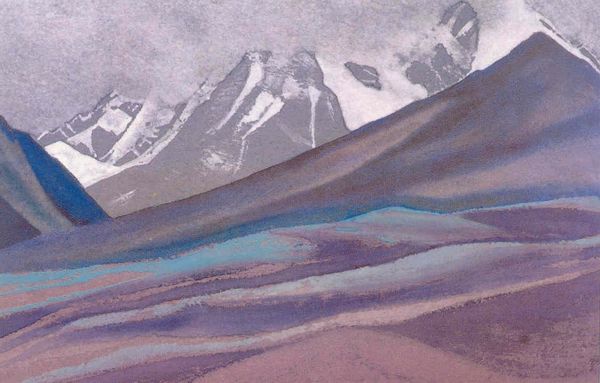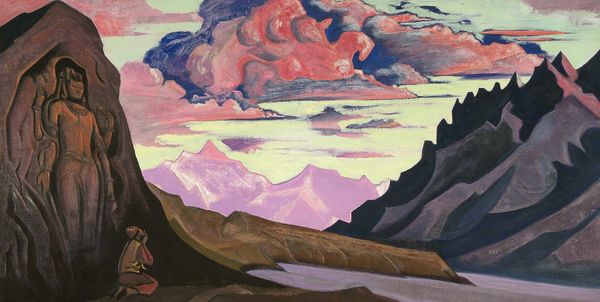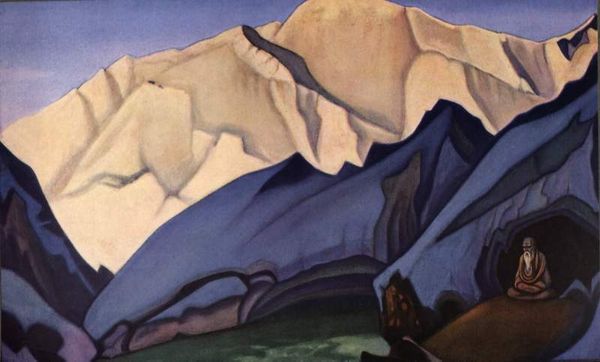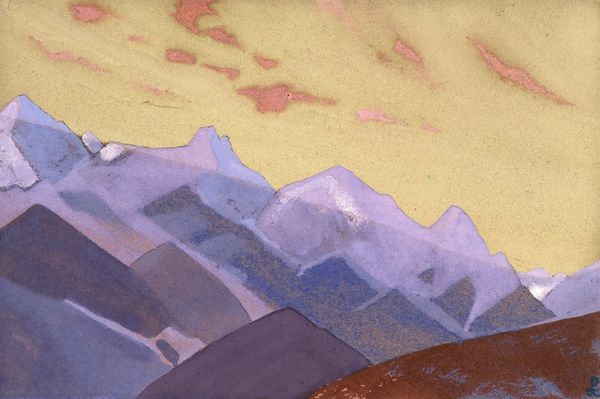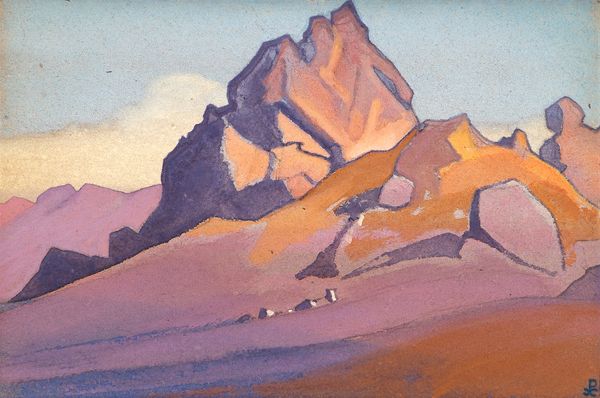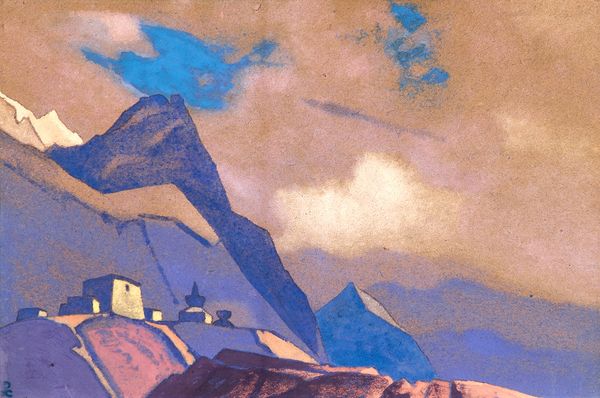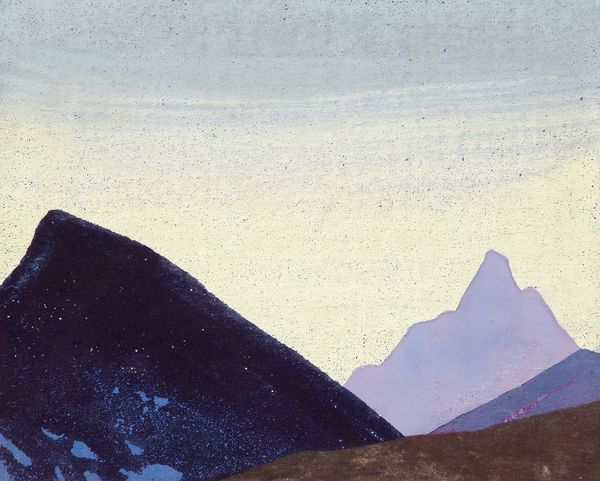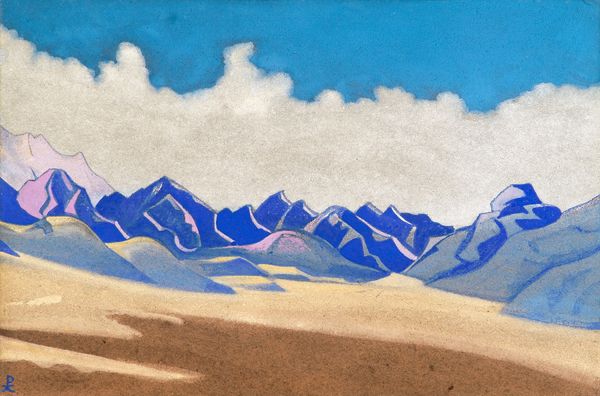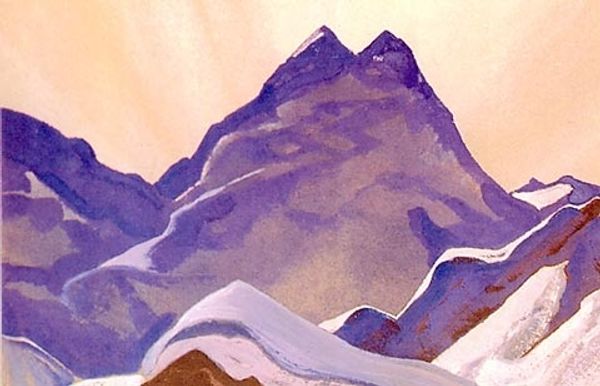
Three swords. Paintings on the stone. 1932
0:00
0:00
nicholasroerich
Nicholas Roerich Museum, New York City, NY, US
Dimensions: 36.8 x 52.7 cm
Copyright: Public domain
Editor: This is Nicholas Roerich's 1932 tempera painting, "Three Swords. Paintings on the Stone." I find its stark geometric forms quite striking. The swords carved into the mountainside give me a sense of foreboding. How do you interpret this work? Curator: It's important to situate Roerich within the context of his time. He was deeply interested in Eastern philosophy and Theosophy, influencing his symbolic landscapes. Those swords aren't just weapons; they represent choices and consequences inscribed onto the very earth. They make me think of how societies write their histories, sometimes violently, onto the land. Does the abstract style influence your feeling of foreboding? Editor: I think so, definitely. The abstraction makes it feel less literal, more symbolic. Like the mountains themselves are bearing witness to these acts of aggression or difficult decisions. Curator: Precisely. Think about the symbolism of mountains across cultures – places of refuge, spiritual ascent, but also isolation and conflict. Roerich intertwines these ideas, and the swords become a potent symbol. He's asking us: what will be etched onto our future? How do you see this piece engaging with current discussions of power and representation? Editor: Well, in today's context, with so much geopolitical tension, those swords could represent ongoing struggles and the lasting impact of historical conflicts. Curator: Exactly! And how we collectively memorialize – or erase – certain narratives from our landscape and historical memory. Art like this makes visible the often unseen forces shaping our world. Editor: I see it so differently now. I initially responded to the formal aspects, but knowing the history and Roerich’s influences adds so much depth. Curator: And that’s the beauty of art – it allows for both personal reflection and engagement with wider historical narratives.
Comments
No comments
Be the first to comment and join the conversation on the ultimate creative platform.
